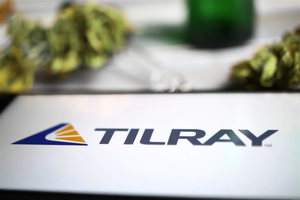Introduction: The Rise of Global Equipment Demand
As global industrialization accelerates and infrastructure projects expand, the demand for adaptable construction machinery is reaching new heights. Skid steer attachments, known for their versatility and compatibility with a wide array of tasks, have emerged as essential tools in this wave of development. They enable a single machine to perform dozens of specialized functions, minimizing costs and maximizing efficiency. What once was a product limited to local suppliers has now become a globally traded commodity, thanks to advancements in cross-border shipping and international logistics.
Understanding Skid Steer Attachments and Their Versatility
Skid steer attachments are modular tools designed to be mounted on skid steer loaders, transforming the loader into a multi-purpose machine. These attachments include augers, brush cutters, backhoes, trenchers, snow plows, mulchers, pallet forks, and more. Their value lies in their ability to replace multiple standalone machines, reducing storage space, labor needs, and operating expenses. This versatility makes them ideal not only for construction companies but also for farmers, municipalities, forestry workers, and snow management teams. As businesses recognize this utility, demand for specialized attachments continues to rise globally.
“The true value of skid steer attachments lies in their adaptability across applications,” says Bill Karidias, President of Spartan Equipment. “From demolition to landscaping, users demand equipment that can do more with less downtime, making versatility the industry’s gold standard.”
Cross-Border Shipping: The Backbone of Global Distribution
International trade routes and logistics systems have evolved to handle a wide range of cargo, including heavy-duty construction attachments. Cross-border shipping plays a pivotal role in ensuring that products such as skid steer attachments reach end-users in remote or underserved markets. The ability to transport these attachments efficiently has transformed how manufacturers approach global sales. Cross-border logistics allows a company in Minnesota to sell a hydraulic grapple to a mining operation in Chile, or a forestry mulcher to a contractor in Sweden, expanding both revenue and brand reach.
“Cross-border shipping has become more sophisticated with predictive tracking and tighter delivery windows,” says Michael Song, Marketing Manager at China shipping forwarder. “Buyers expect transparency and speed, even when shipping heavy attachments across oceans.”
The Evolution of Supply Chains in the Equipment Industry
Traditionally, supply chains in the heavy machinery sector were localized, focusing on serving domestic demand through in-person dealership networks. Today, global supply chains span continents, incorporating multiple players, manufacturers, shippers, customs agents, distributors, and final buyers. The integration of technology into these chains has brought about real-time inventory tracking, predictive supply management, and faster turnaround times. In the case of skid steer attachments, this has allowed even mid-sized brands to compete in the international market, supported by seamless access to global logistics services.
How International Trade Agreements Influence Attachment Distribution
Free trade agreements (FTAs) such as NAFTA (now USMCA), the EU Free Trade Area, and Asia-Pacific Economic Cooperation (APEC) initiatives have a direct impact on how skid steer attachments are priced and sold internationally. These agreements reduce tariffs, eliminate redundant regulatory barriers, and streamline customs procedures, making it easier for manufacturers to export equipment and accessories. Lower trade friction means that customers in regions like Latin America or Southeast Asia can access U.S.- or EU-manufactured attachments at more competitive rates, further stimulating demand.
Market Expansion Through Logistics Infrastructure
The role of ports, shipping hubs, and intermodal transport systems cannot be overstated in the rise of international trade in heavy equipment. Infrastructure investments have decreased the time and cost required to move attachments from one region to another. Specialized cargo handling facilities for large industrial equipment have further optimized the process. With predictable shipping times and increased transparency, buyers are more confident in ordering from foreign suppliers, especially for time-sensitive projects like seasonal agriculture or road building.
Commerce and Digital Marketplaces Fueling Global Reach
Digital platforms like Alibaba, IronPlanet, and specialized equipment retailers now allow companies to list, market, and sell their attachments to a global customer base. These platforms include integrated freight calculators, import/export documentation assistance, and even financing tools. As a result, contractors in Africa can source skid steer brush cutters from the U.S., while Eastern European landscapers can buy trenchers from Canada, all from their computer. This new sales dynamic is accelerating the globalization of the skid steer attachment industry.
“B2B equipment buyers are increasingly behaving like retail consumers, they want intuitive digital experiences and secure international transactions,” explains Eduard Tupikov, Co-Founder of Finelo. “E-commerce has made cross-border purchasing of industrial products more accessible than ever.”
Regional Trends and Niche Demands
Geographical needs often dictate the type of attachments in demand. For instance, rocky terrain in the Middle East requires powerful rock saw attachments, while rice farming in Asia demands specific tilling and trenching tools. Cross-border shipping allows suppliers to match these niche demands with precision. Instead of being limited by local inventory, buyers can now access a wider variety of highly specialized attachments. This benefits industries that operate in extreme or unique conditions, which often require custom or rare tools unavailable domestically.
OEMs vs. Third-Party Manufacturers in Global Trade
Original Equipment Manufacturers (OEMs) dominate a portion of the skid steer attachment market, but third-party attachment makers have surged in global relevance. These manufacturers often offer lower costs, innovation in design, and quick delivery. Cross-border shipping allows both OEMs and aftermarket suppliers to reach customers worldwide. This democratization of the market, where buyers can compare OEM precision with third-party affordability, leads to more informed purchasing decisions, price competition, and innovation.
Workforce Well-Being and Human-Centric Supply Chains
As global demand for equipment scales up, companies are also starting to consider the human side of these supply chains, particularly how work environments and employment structures affect mental health and long-term recovery from issues such as substance abuse. In industries like construction and logistics, where stress, isolation, and injury are common, building humane work practices can make a significant difference.
“Many people in recovery thrive when given structured, purpose-driven work in growing industries like construction,” says Drew Anagnostou, CEO at Sacred Journey Recovery. “When companies invest in supportive job cultures, the impact goes far beyond productivity, it becomes a driver of personal transformation.”
Economic Impact and Job Creation
Global trade in construction attachments brings financial benefit not only to manufacturers but also to an entire ecosystem of support services. Export specialists, freight handlers, customs processors, and logistics IT developers are all vital to successful international transactions. Countries that import these tools to support local infrastructure projects often see job creation in construction, road work, utilities, and agriculture. In turn, the increased economic activity feeds back into demand for even more advanced and efficient attachments.
Challenges in Cross-Border Shipping of Heavy Equipment
Cross-border shipping of heavy equipment like skid steer attachments poses challenges that range from logistical to regulatory. High transportation costs due to weight and size, unpredictable customs delays, varying safety certifications by region, and protectionist trade policies can complicate international sales. Additionally, many countries have stringent import restrictions or require localized documentation that smaller manufacturers might struggle to navigate. However, the rise of logistics consulting services and integrated digital customs tools is reducing these frictions significantly.
Sustainability and the Role of Eco-Friendly Shipping
The environmental impact of global logistics has come under increasing scrutiny. Heavy equipment shipping often involves high carbon emissions, and buyers are beginning to favor brands that offset their footprint or utilize greener shipping methods. Manufacturers are responding by optimizing packaging, consolidating shipments, and partnering with logistics providers offering sustainable practices. Some companies are exploring regional warehousing to reduce long-haul transport entirely, offering faster and more eco-conscious delivery of popular skid steer attachments.
“Environmental responsibility is not limited to one industry, it’s becoming a cross-sector priority,” notes Nick Borges, COO at Heartwood Recovery. “Even in construction and equipment logistics, decision-makers are asking how their operations align with long-term well-being, for people and the planet.”
Predictive Analytics and AI in Global Equipment Logistics
Advanced technologies such as AI and machine learning are revolutionizing the way global equipment trade is conducted. Predictive analytics can forecast demand in specific regions, allowing manufacturers to prepare shipments in advance or pre-position inventory. AI-driven supply chain tools can flag potential shipping delays, suggest alternative routes, and help optimize warehouse efficiency. These technologies minimize the risk of overstock or shortages, making cross-border transactions smoother for buyers and sellers of skid steer attachments alike.
Wrap Up: A New Era of Equipment Trade
The globalization of the skid steer attachment market underscores a broader trend, industrial tools and equipment are no longer confined by geography. Cross-border shipping has made it possible for businesses anywhere in the world to access exactly what they need, when they need it. From digital sales platforms to predictive logistics, from trade agreements to sustainable shipping, a robust global infrastructure now supports this vital sector. As the demand for high-functionality machinery grows, cross-border shipping will remain the catalyst driving innovation, accessibility, and growth in the skid steer attachment industry.
Media Contact
Company Name: xd
Contact Person: Mike
Email: Send Email
Country: Spain
Website: https://www.xdexpress.com/






